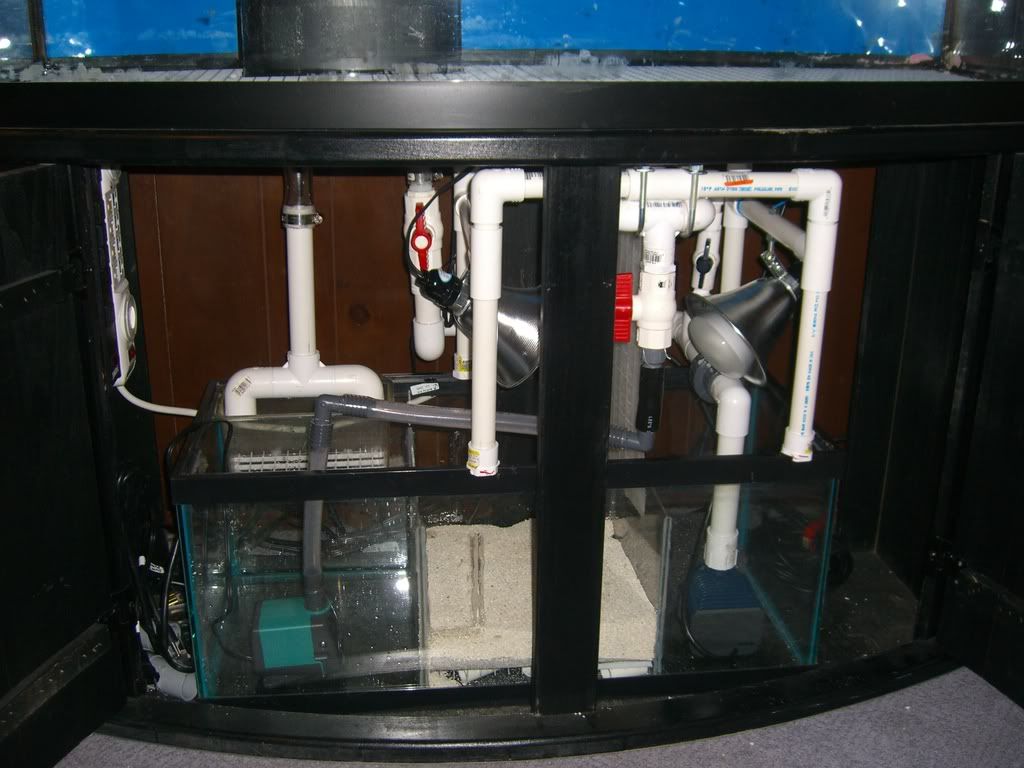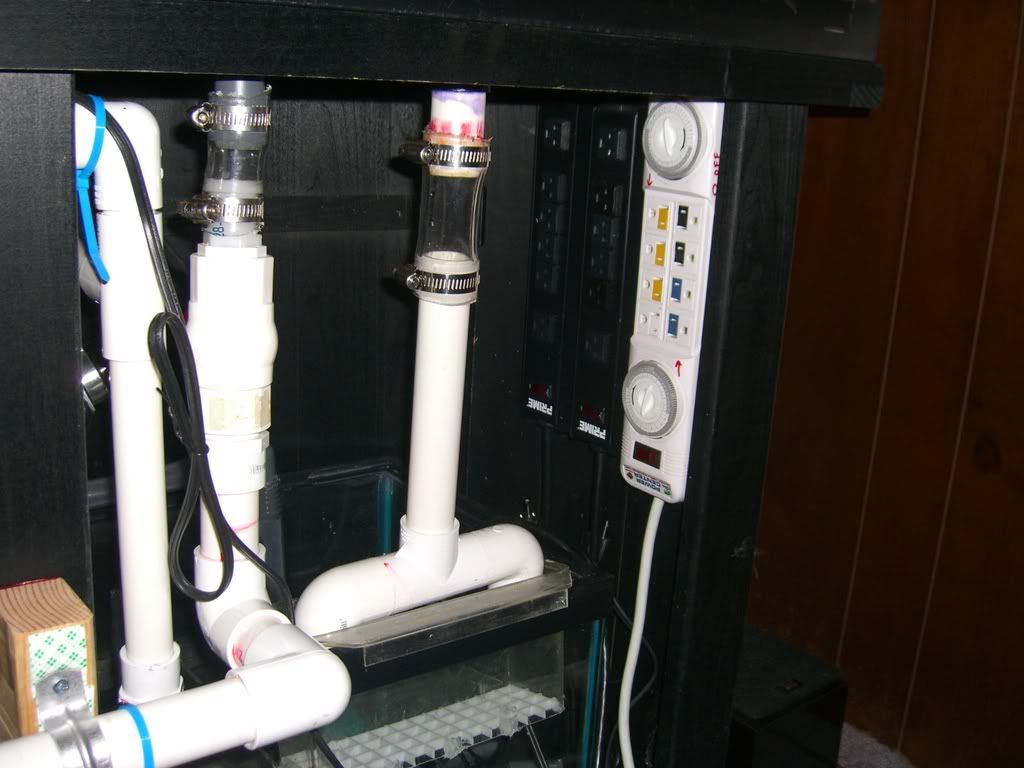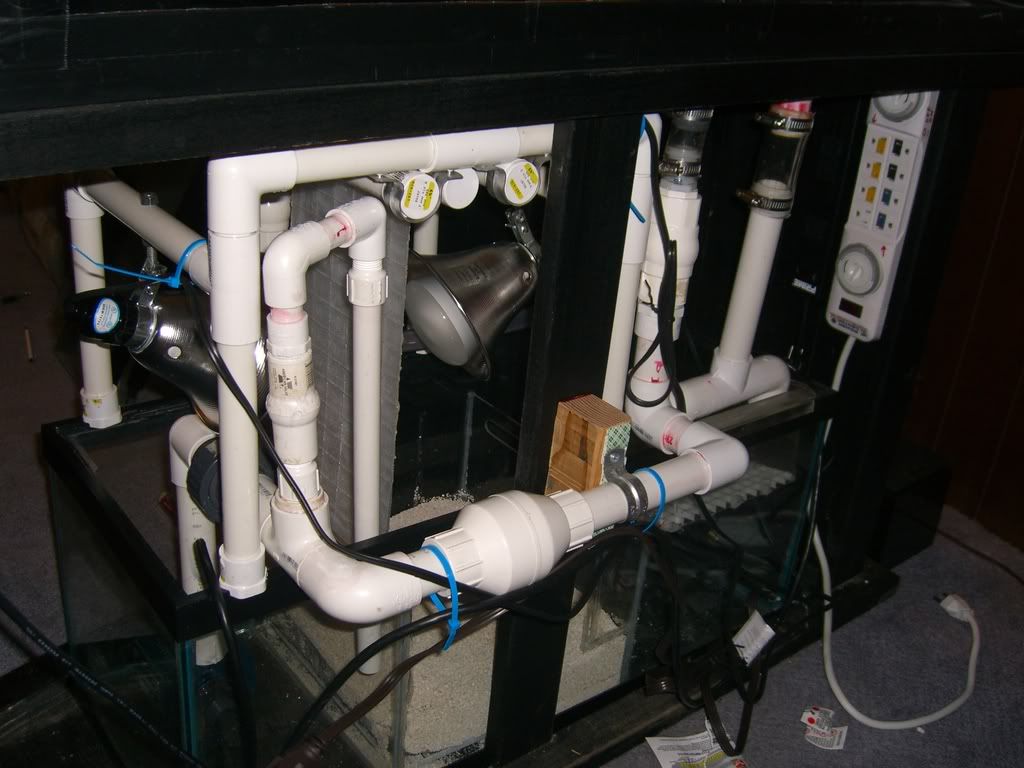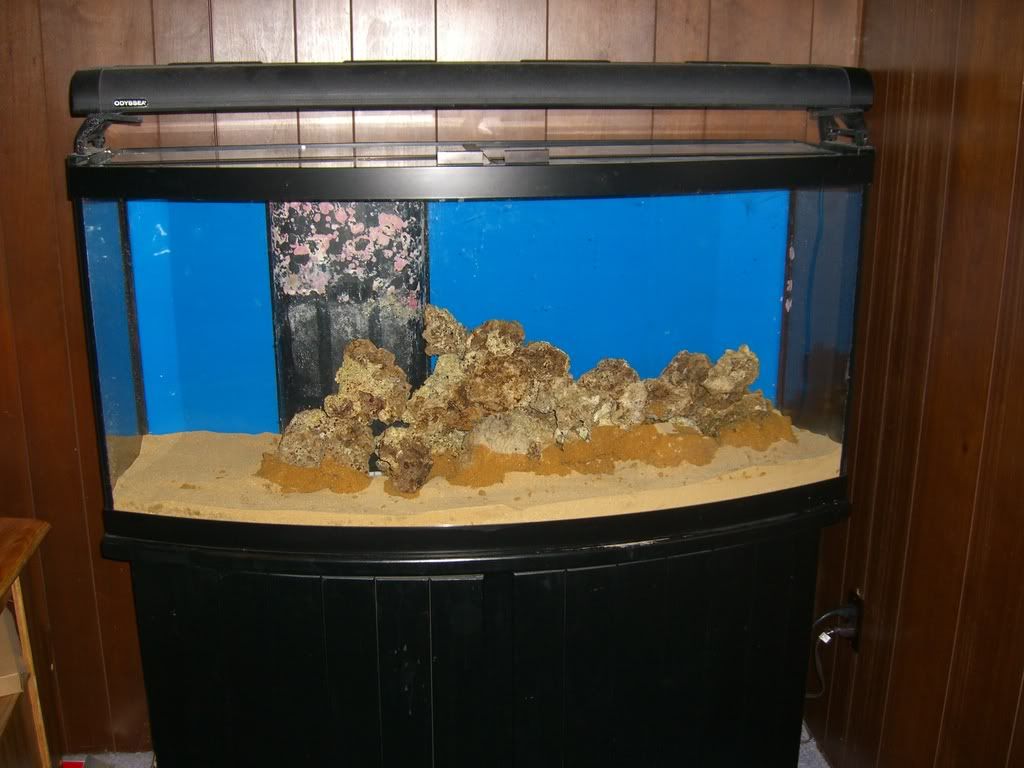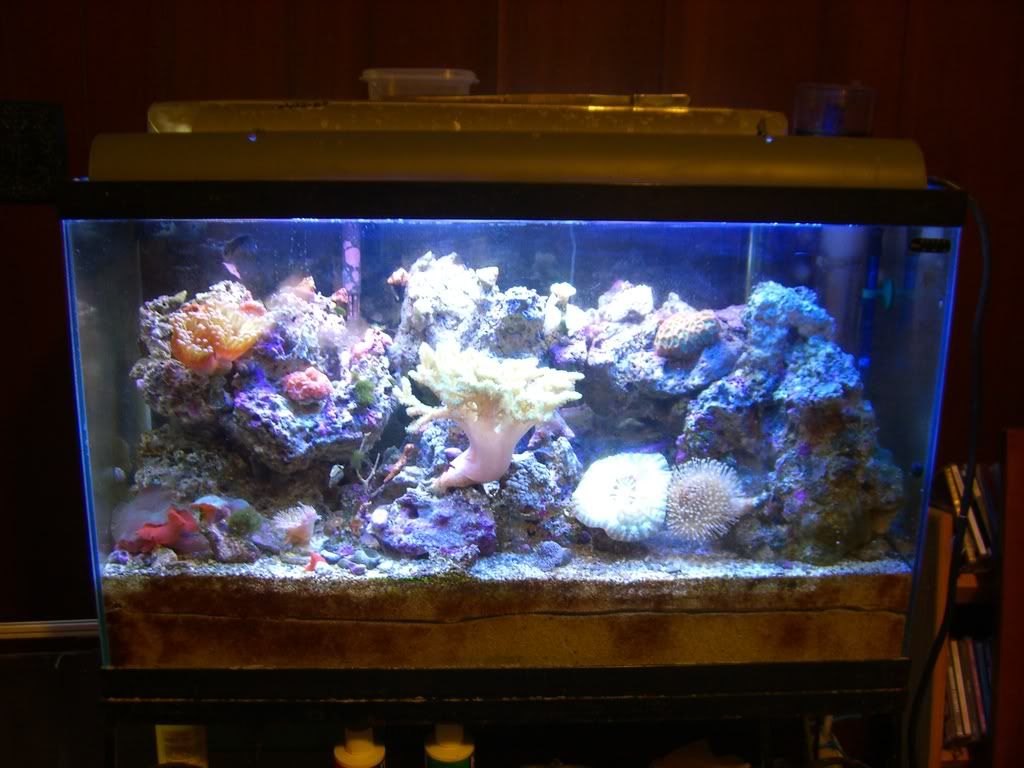I've had my 40 gallon reef up for about a year. Recently, I've become "less than satisfied" with it and looked to upgrade a bit in size. Ogre997 had just recently completed his own upgrade(72 to 175 - some upgrade), and so had a 72 gallon bowfront he no longer needed. I snapped that up from him and also bought a protein skimmer that Patriot76 had available. I will begin the swap...sometime soon...I'm gathering my nerve. Truth is, I'm considering setting up a 3rd small system for cycling in the rock for the new refugium, then move all the corals into it when its ready - then I'd shift the sand and rock over into the bigger tank, let everything settle and then move my corals into that. I've read that some people have done the whole transfer in one shot, without stashing the corals - I've also read that that some have experienced big nitrate swings and small cycles after transfer. I'm still thinking about it....Do I feel lucky? Anyway, once I get everything into the new tank, I'll take another picture.
Anyway, this is what I have:
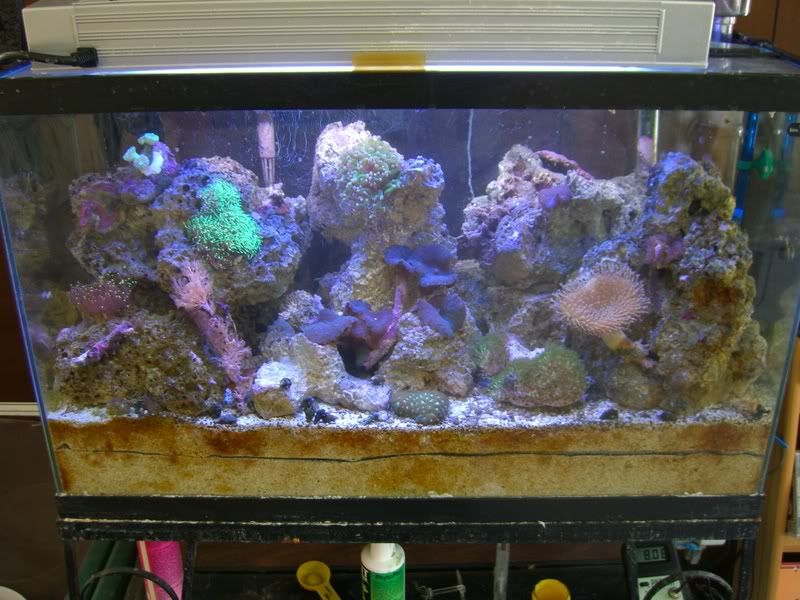
And this is where I'm going:
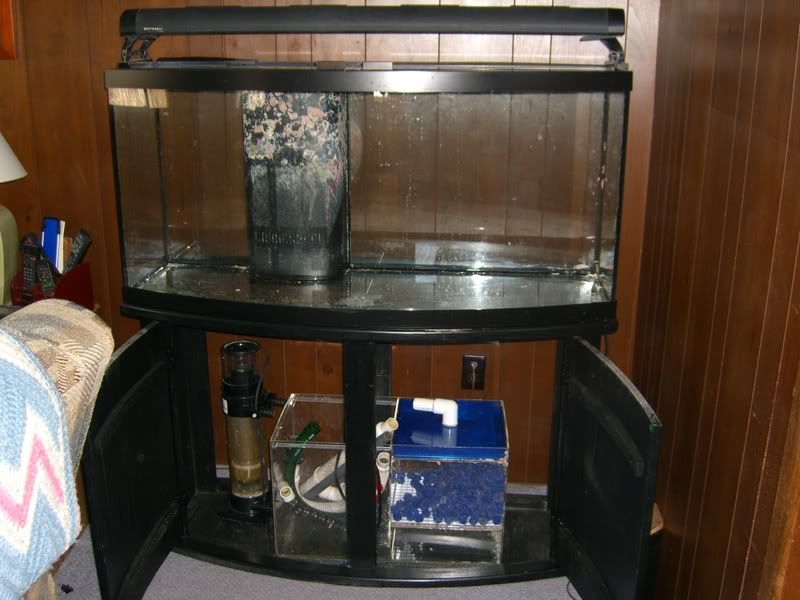
Anyway, this is what I have:

And this is where I'm going:



